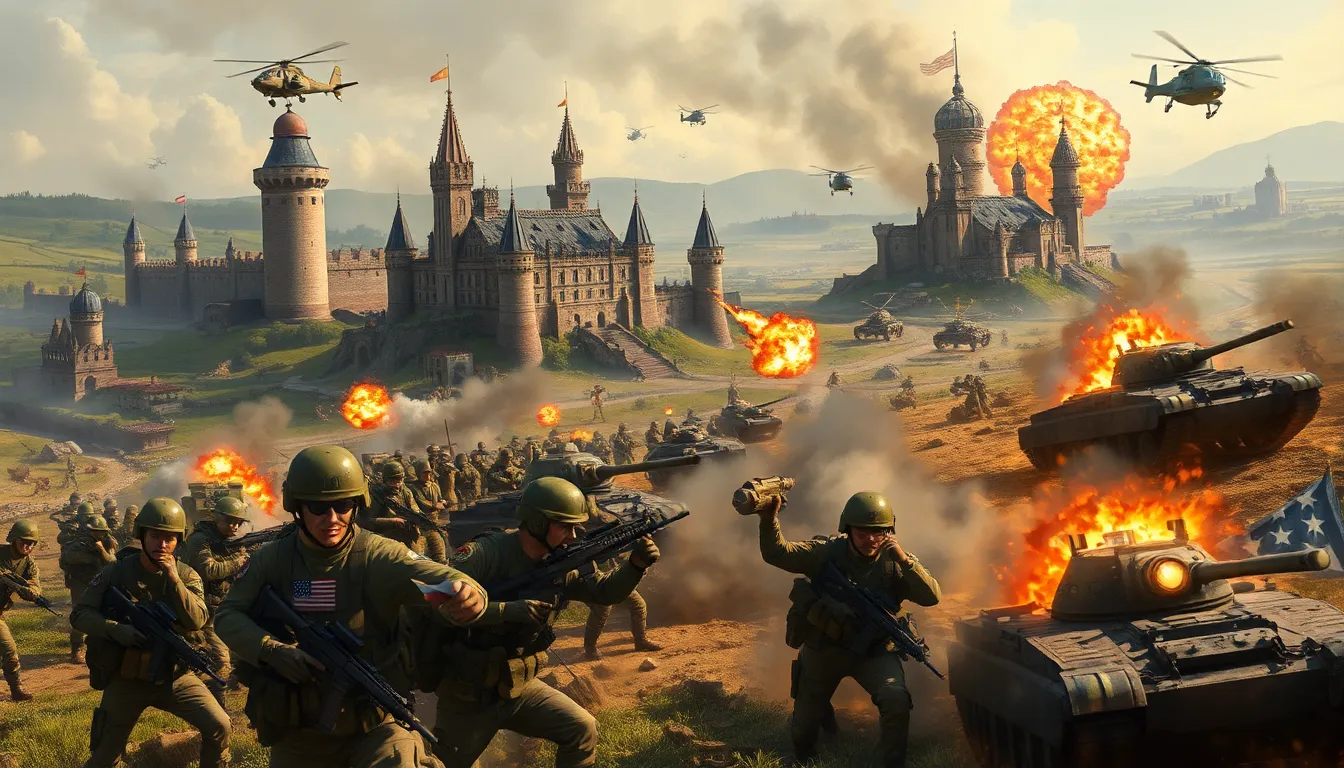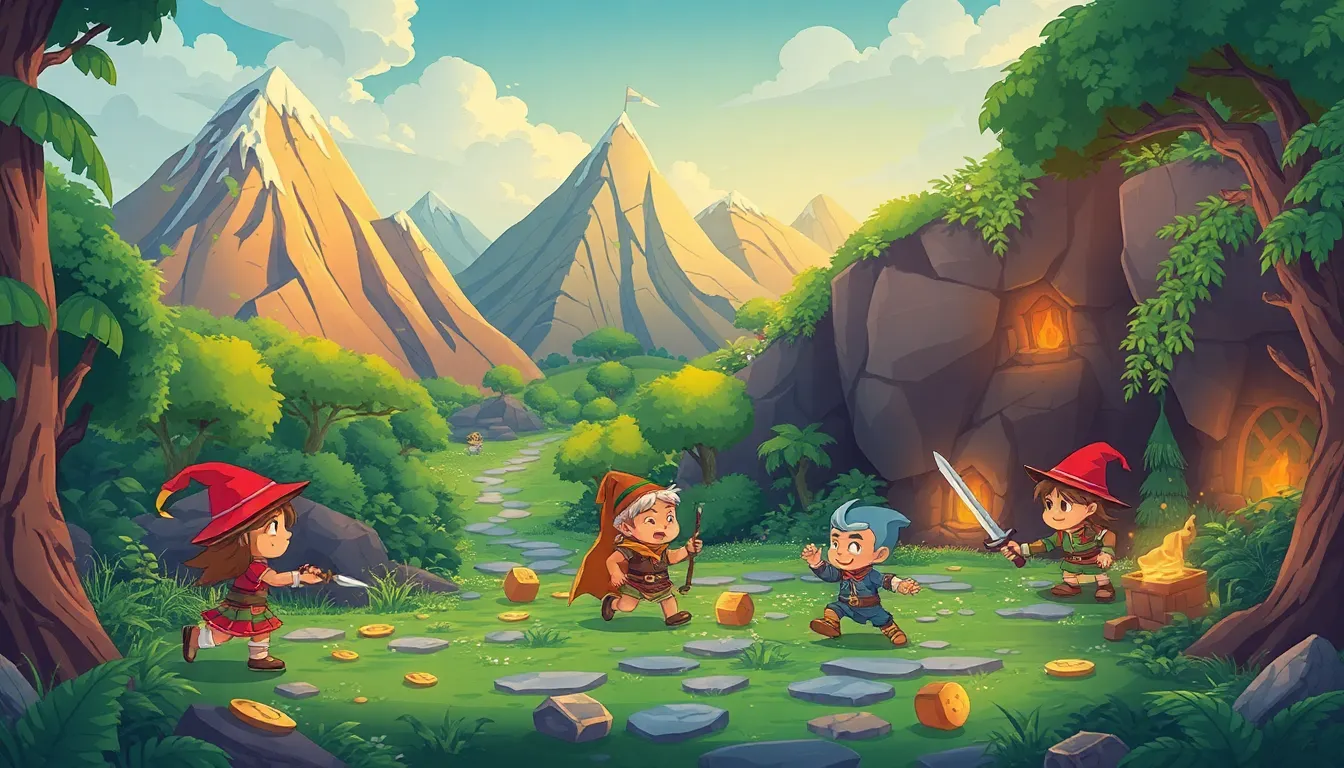In a world where peace can sometimes feel overrated, war strategy games offer a thrilling escape into the chaos of battle. These games aren’t just about mindless destruction; they challenge players to think critically, plan meticulously, and outsmart their opponents. Picture yourself as a cunning general, orchestrating epic battles while sipping coffee in your pajamas. Sounds enticing, right?
Table of Contents
ToggleOverview of War Strategy Games
War strategy games combine tactics with gameplay mechanics, engaging players in intricate scenarios. Players assume the role of commanders, making decisions that impact the outcome of battles. These games often emphasize resource management, troop positioning, and strategic foresight.
Genres within this category vary, including real-time strategy (RTS) and turn-based strategy (TBS). RTS games like “StarCraft” demand quick decision-making and adaptability. TBS games like “Civilization” allow for more deliberate planning, encouraging long-term strategies over immediate actions.
Multiplayer features enhance the thrill by pitting players against each other in tactical contests. Competitive play introduces layers of complexity, as players must anticipate their opponents’ moves while executing their own strategies. Popular platforms such as PC and consoles host numerous titles, providing expansive options for gamers.
Visuals play a critical role in immersing players, with detailed graphics depicting battlefield environments and units. Sound design amplifies the experience, bringing the chaos of war to life. Engaging narratives often accompany gameplay, offering historical contexts or fictional storylines that deepen player investment.
Many players appreciate the educational aspects of these games. They may improve critical thinking and strategic planning skills as players explore historical campaigns or fictional conflicts. Historical accuracy can vary, yet many titles strive to respect real-world events, enhancing the authenticity of the experience.
Ultimately, war strategy games attract diverse audiences, providing an avenue for competition and cognitive challenge. By blending entertainment with strategy, these games cater to various interests, from casual gamers to hardcore strategists.
Popular Genres of War Strategy Games

War strategy games encompass various genres, each offering unique gameplay experiences. Players engage in different tactical approaches depending on their chosen style.
Turn-Based Strategy Games
Turn-based strategy games allow players to make decisions at their own pace, fostering deep strategic planning. Titles like “Civilization” emphasize resource management and territorial expansion. Players analyze situations, assess risks, and execute plans over rounds. Each move can lead to significant consequences, enhancing overall engagement. Games in this genre often include detailed narratives, prompting players to immerse themselves in historical or fictional scenarios.
Real-Time Strategy Games
Real-time strategy games demand quick thinking and fast-paced decision-making. “StarCraft” exemplifies this genre, requiring players to gather resources and build armies in real-time combat. Players must react promptly to opponents’ strategies, which adds intensity and excitement. This genre often includes multiplayer modes, encouraging competition and collaboration among players. Engaging visuals and immersive sound further enhance the experience, drawing players deeper into the battles.
Key Features of War Strategy Games
War strategy games incorporate distinct features that enhance player engagement and challenge. Several elements contribute to their immersive nature and strategic depth.
Tactical Elements
Tactical elements define the gameplay experience in war strategy games. Players use various units and formations to gain an advantage on the battlefield. Positioning units strategically often determines the outcome of engagements. Players can utilize terrain to enhance defenses, launching surprise attacks from high ground or forests. Flanking maneuvers add complexity, requiring opponents to anticipate movements and counteract strategies. Unique abilities or skills of different unit types demand that players continuously adapt their tactics based on the evolving battlefield. Decision-making often hinges on real-time responses in RTS games, while TBS games allow for thorough consideration before executing strategies.
Resource Management
Resource management stands as a critical component of war strategy games. Players gather and allocate resources to build armies and fortify defenses. Key resources typically include currency, materials, and technology, which directly influence a player’s capabilities. Players often face the challenge of balancing short-term needs with long-term growth strategies. Investing in infrastructure leads to better resource generation, while prioritizing military units can yield immediate benefits during engagements. Effective resource management fosters strategic planning, as players must decide when to expand or conserve. Success frequently depends on recognizing which resources to prioritize in a dynamic game environment.
Impact of War Strategy Games on Players
War strategy games significantly influence players, shaping their cognitive skills and social interactions. Players often experience various benefits that extend beyond gameplay.
Cognitive Benefits
Cognitive skills receive a substantial boost from war strategy games. Decision-making becomes sharper as players evaluate countless variables. Strategic planning emerges as players devise long-term tactics. Critical thinking skills improve through analyzing opponents’ strategies and predicting their moves. Studies indicate that engaging with these games enhances problem-solving abilities, allowing players to think critically under pressure. Furthermore, multitasking skills are honed as individuals manage resources and command units simultaneously. Research shows that playing strategy games can improve memory retention, particularly in recalling unit details and past moves.
Social Interaction
Social interactions flourish within the realm of war strategy games. Competitive elements foster camaraderie among players, encouraging teamwork in multiplayer scenarios. Online communities develop as players engage in discussions about strategies and game mechanics. Collaborating to achieve a common goal strengthens bonds with fellow gamers. Gamers can form alliances, enhancing strategic depth and creating friendships. Regular participation in these games can develop a sense of belonging among players. Events and tournaments offer opportunities for networking, enabling players to connect with others worldwide. Overall, war strategy games facilitate connections that transcend geographical barriers, enriching player experiences.
Future Trends in War Strategy Games
Emerging technologies shape the future of war strategy games. Virtual reality (VR) and augmented reality (AR) enhance immersion by allowing players to experience battles in lifelike environments. These developments create opportunities for innovative gameplay mechanics and deeper player engagement.
Artificial intelligence (AI) will play a pivotal role in developing more adaptive opponents. Intelligent NPCs (non-playable characters) can learn from players’ strategies, creating a dynamic and unpredictable gaming experience. Such advancements push players to continuously formulate new tactics.
Multiplayer modes will likely evolve, focusing on cooperative gameplay. Players may collaborate in larger teams to achieve common objectives. As player communities grow, social features can strengthen, allowing for enhanced communication and strategy-sharing.
Cross-platform compatibility will become increasingly important. Players on different devices may engage in battles together, expanding the player base and fostering inclusivity. This trend encourages broader participation from diverse gaming communities.
E-sports will contribute significantly to the popularity of war strategy games. Competitive tournaments can attract more viewers and participants, providing a platform for players to showcase their skills. Professional leagues could emerge, offering opportunities for aspiring gamers.
Game developers might incorporate more educational elements into their designs. Historical contexts can provide players with insights into past military strategies while improving critical thinking skills. Such approaches make war strategy games not only entertaining but also informative.
Finally, accessibility features are set to improve. Developers will focus on making games more inclusive for individuals with disabilities. Enhanced user interfaces and customizable controls ensure that all players can enjoy the strategic depth of these games.
War strategy games continue to captivate players with their blend of tactical depth and immersive experiences. They challenge players to think critically and adapt their strategies, fostering essential skills that extend beyond the gaming world. As technology evolves, these games are set to become even more engaging and accessible, inviting a broader audience to participate in the excitement of strategic warfare.
With the rise of e-sports and innovative gameplay features, the future looks promising for both casual and hardcore gamers. War strategy games not only entertain but also build communities and enhance cognitive abilities, making them a valuable addition to the gaming landscape.




